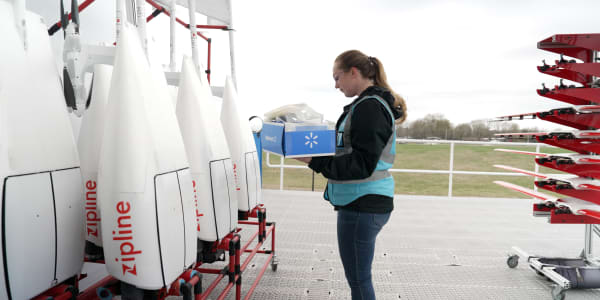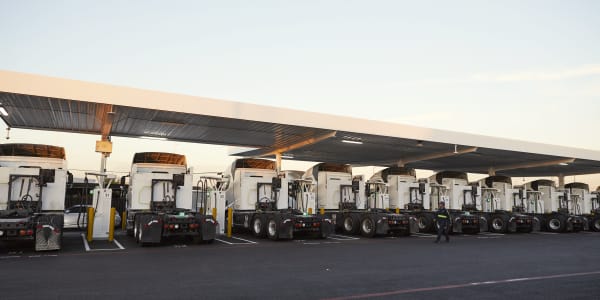Drawbridge recognized early on that one communication device isn't nearly enough for most busy people. Consumers and fans don't just buy socks or get basketball scores on desktop computers. They do it on laptops, tablets, mobile phones, even smart appliances — all offering a different user experience that Drawbridge set out to identify and optimize.
Launched in late 2010 by Kamakshi Sivaramakrishnan, a rare woman in the Silicon Valley boys club (she's got Google engineering credentials and a Stanford Ph.D. in information theory), the start-up is investing aggressively in building its "global graph" that helps it anonymously identify users as they switch between gizmos. Helping brands correctly pinpoint and measure the audiences they want to reach — and which device those folks are using — is the area Drawbridge specializes in, and one that may upend the big three ad tech giants.
"Drawbridge can identify user behavior like the big guys do on sites like Facebook and Google, but they do it across the wider internet," says Vikrant Gandhi, a digital transformation analyst for research firm Frost & Sullivan. "The valuation of these giant companies comes largely from the data it collects on its user base. Drawbridge figured out a way to understand users even when they aren't logging in somewhere."
The secret sauce is a proprietary set of Drawbridge algorithms that apply large-scale machine-learning technology to infer who's using which gadgets where. Based on those probabilities, the company can reliably predict whether a user is on a phone or a smart TV or an old Dell, and optimize service for maximum impact. That's useful whether a Drawbridge client is selling an ad or simply wants to streamline experiences across devices, authenticate someone's identity or customize a website without a user log-in.
"This isn't about bicycle ads following you from device to device, which would be a depressing use of this technology," says Sivaramakrishnan. "When I transition onto my tablet or phone, forget about advertising; the ways in which I engage in media and video and content change, and Drawbridge optimizes based on the device the user has in hand."
If a user is looking for Warriors scores on a phone, say, Drawbridge identity management can take a user there immediately rather than navigating through five clicks. Likewise, knowing that the Airbnb or Pinterest user who usually logs in at home is the same one logging in on her iPad adds a layer of authentication that reduces security risk for fraud.
More from CNBC Disruptor 50:
Why Warren Buffett is betting on this software start-up
Snap's dismal run isn't slowing interest in IPOs
With an IPO on the shelf, SoFi lets employees sell 20 percent of vested stock
Drawbridge is the largest independent cross-device identity company, though contenders such as Adbrain, Crosswise and Tapad all compete for a slice of the customer ID market that relies on gathering user data via IP address, device type, browser type, location and operating system.
David vs. Goliath
What's driving Drawbridge's growth is licensing its graph of connected consumers for cross-device data applications, as well as expanding beyond advertising into other realms, like fraud prevention and website customization. The accuracy of its algorithms also sets it apart. Nielsen rates Drawbridge as 97.3 percent precise in identifying consumers across devices. That success helps the company stay strong in the face of massive challenges from Facebook, Apple, Google and Amazon.
Drawbridge figured out a way to understand users even when they aren't logging in somewhere.Vikrant Gandhianalyst at Frost & Sullivan
But going up against the titans has its pitfalls. "Let's say Google decides to change something in how they use data or assess traffic to websites. That could send Drawbridge scrambling to keep up, and with a tiny fraction of Google's staffing and resources," says Gandhi. The other threat is maintaining privacy. "Drawbridge needs to make sure its algorithms are holding tight to protect confidentiality or else it will make headlines as yet another victim of a privacy breach."
Investors are taking the risk. Backed by Sequoia Capital, Kleiner Perkins Caufield Byers and Northgate Capital, Drawbridge drew $48.5 million in funding after three rounds. Over the past three years, the company witnessed a doubling of annual revenue growth, led by a team heavily drawn from Google, Yahoo, Netflix, Apple, Quantcast and Rocket Fuel. It's not the typical staff profile.
The X factor
The company has a staff of just over 150 employees, with 32 percent of technical roles filled by women and 43 percent at the director level and higher. It's one good reason Drawbridge was listed as the fastest-growing female-led company in America last year in the Inc. 5000.
Sivaramakrishnan is less interested in being a token female — "though if I can inspire another high school girl to something like this and beyond, yeah, it does matter," she says — than in the vast potential she envisions for her company. "Every brand, every financial service, every automotive brand, every sports team, every publisher and every e-commerce retailer is at its heart interested in making that experience more delightful for users. If we can help them better understand the user, regardless of what device they're using, the fundamental experience improves for people."
Make that many, many people. "We're talking about an identity-management service that touches 3 billion to 4 billion devices and perhaps a billion people, and nobody saw this coming three or four years ago," says Jim Goetz, who led Sequoia's Series C round funding in 2016.
"There's a lot of envy out there for the way Drawbridge pulls together a layer of meaning from the proliferation of our devices." And while Facebook, Google and others now utilize their own data for similar aims, Drawbridge "basically democratizes what the larger players are trying to do inside their walled gardens. Here's a company that brings that same capability to the broader ecosystem, and that has the potential to change everything."
— By David Hochman, special to CNBC.com






